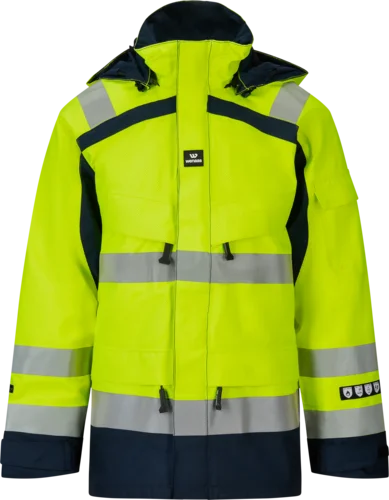What is Arc flash?
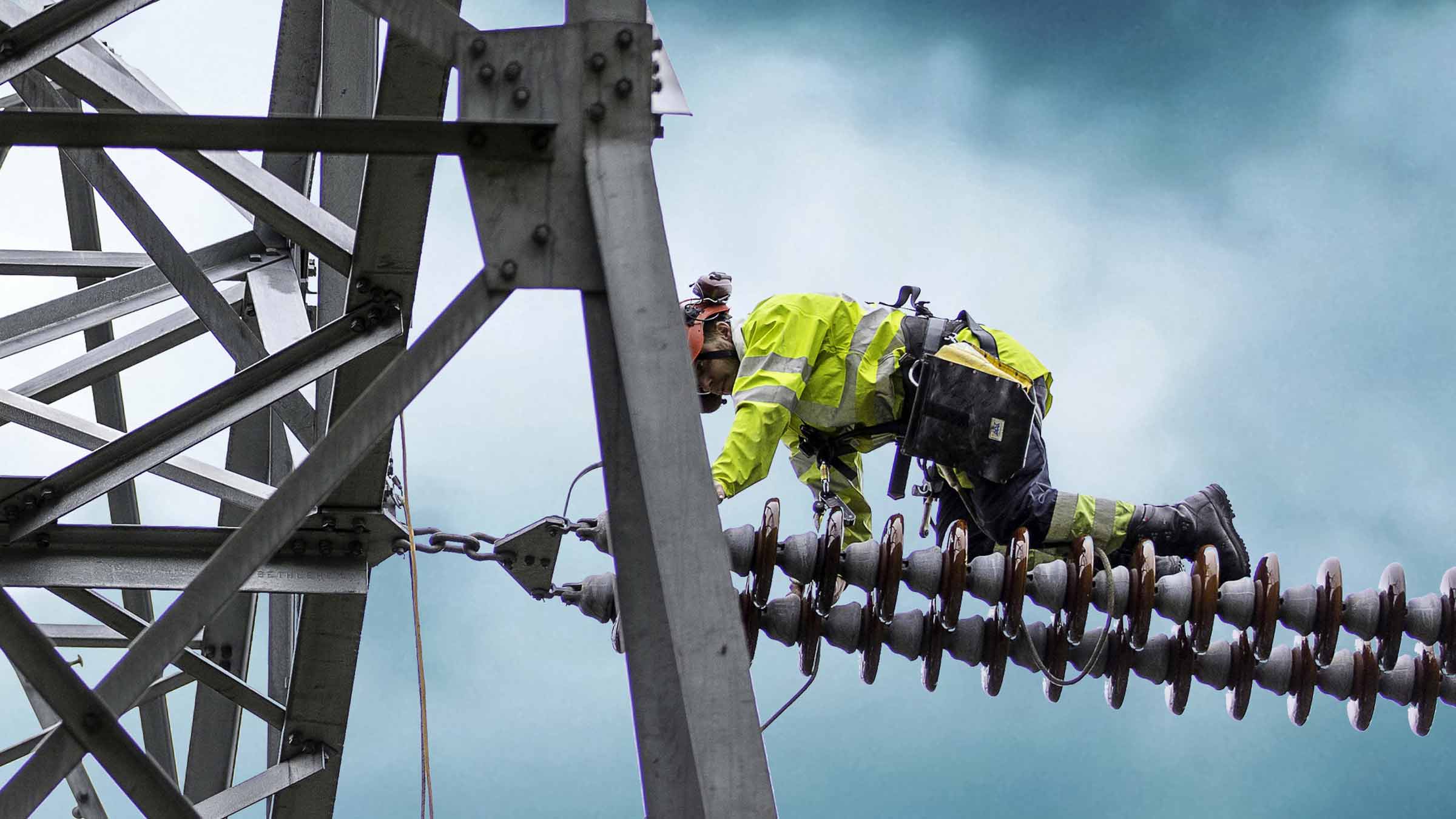

Arc flash can occur in high- and low-voltage electrical systems, and the energy in an arc flash can be powerful even in low-voltage systems on account of a high short-circuit level and/or a long disconnect time.
See our test of arc flash


Calculation of arc flash energy
The potential scope of damage from arc flash short-circuits is described using the concept of “incident energy”, which is stated in calories per square centimetre (cal/cm2). The incident energy is a result of how much energy is released while the arc lasts, and the distance from the arc flash. The calculations are performed on the basis of voltage level, short-circuit current, protection settings and the active supply/user connections. Normally, the incident energy is calculated at a defined distance from the busbar where the arc flash occurs (American standard, IEEE 1584) – usually “arm’s length” (90 cm). In principle, you should attempt to reduce incident energy by disconnecting equipment and adjusting protection measures to keep the cut-out time as short as possible. The time the arc flash continues to burn is crucial to the level of the incident energy.
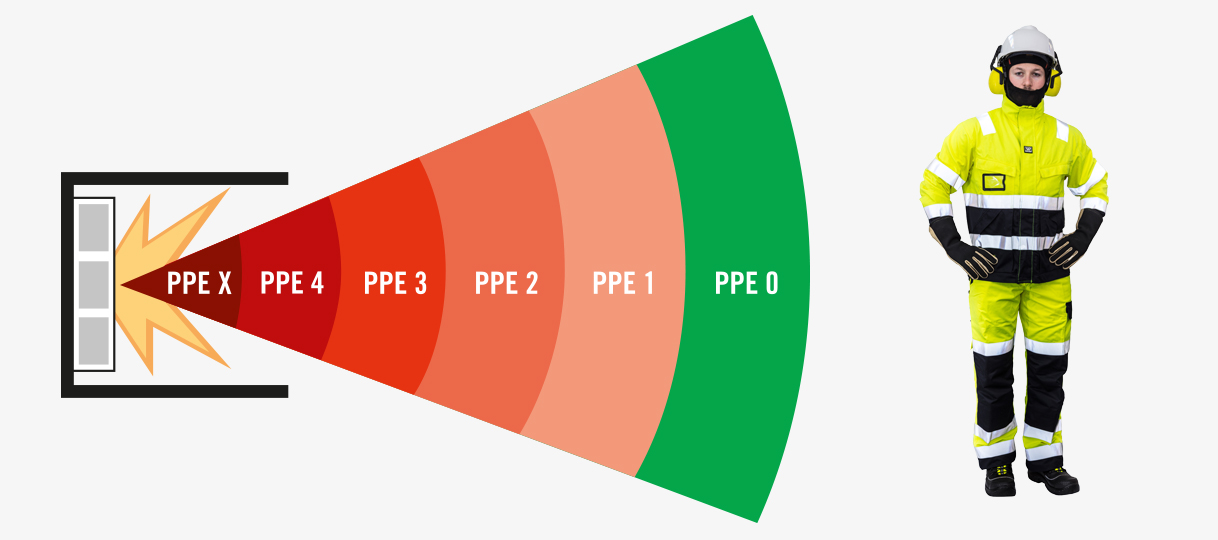

Incident energy arc flash
Incident energy, arc flash:
- PPE 0 ≤ 1.2 cal/cm² (no requirement for arc flash-safe clothing)
- PPE 1 ≤ 4 cal/cm²
- PPE 2 ≤ 8 cal/cm²
- PPE 3 ≤ 25 cal/cm²
- PPE 4 ≤ 40 cal/cm²
- PPE x > 40 cal/cm² (extreme danger)
Clothing in relation to ATPV rating
The clothing must have an ATPV (Arc Thermal Performance Value) rating equal to, or greater than, the applicable value for the arc flash energy at the workplace. Layer on layer arc flash tested clothing will produce a minimum ATPV rating equal to the sum of the ATPV ratings for each layer. The combination can produce a higher ATPV rating than the sum of the ratings of each layer.
Stay protected from head to toe
When protecting yourself against arc flash, you must make sure that the other safety equipment you are using – gloves, safety shoes, helmet, face protector, ear protectors – is certified to the same level. This is necessary and required to ensure the best possible protection of your entire body.
Required clothing for protection against arc flash
The following combination of clothing must be worn while working on electrical panels with calculated arc flash energy:
- Helmet with arc flash-tested face protector
- Ear protectors/ear plugs (not containing unprotected metal parts)
- Arc flash-tested clothing
- Gloves (electrically insulated gloves where necessary)
- Undergarments should be made of wool/cotton. Avoid synthetic fabrics
Electrical injuries
Electrical injuries can be caused by electrical current passing through the body. One of the most common causes is momentary shock caused by contact with standard household current (220 Volt). Such shocks are unpleasant, but usually not dangerous to healthy adults. However, much more serious injuries can be caused and have much more severe consequences.
Electrical current can cause three types of injury:
- Surface burn
- Deep burn
- Alteration of cardiac rhythm – possible cardiac arrest
Products
Related articles
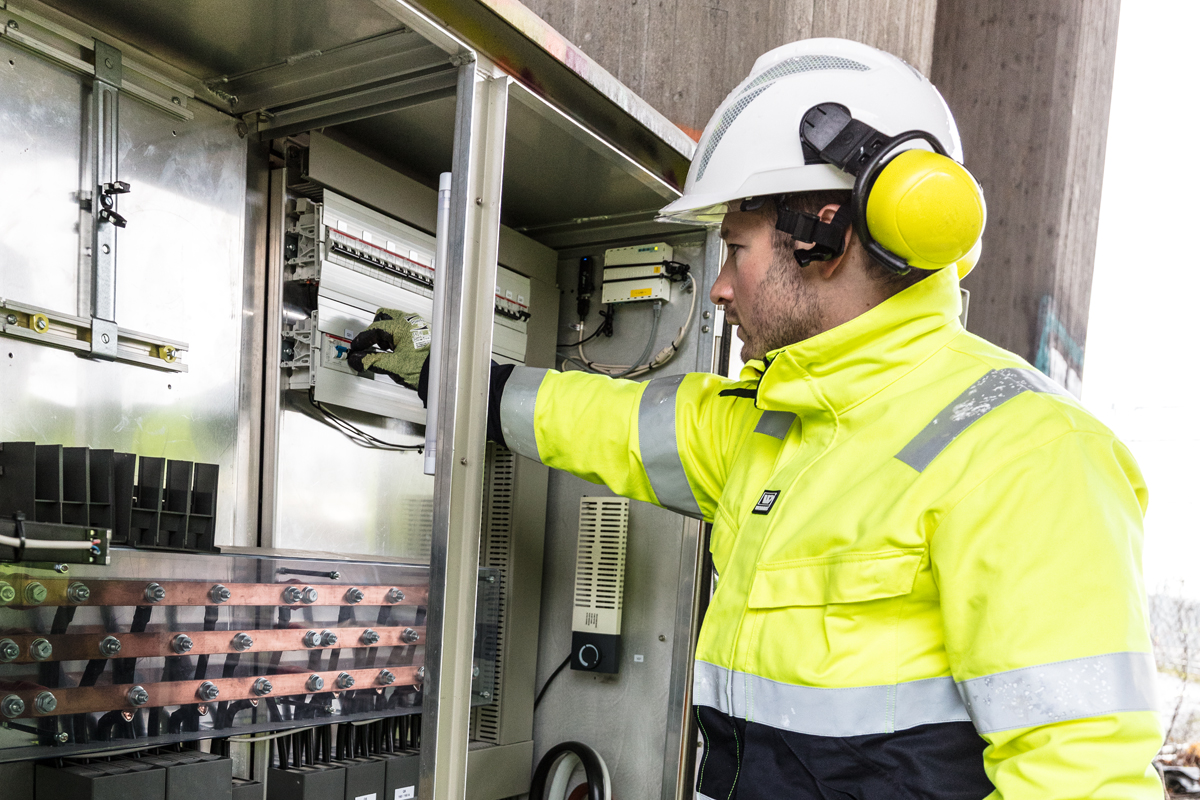

Risk assessment
Risk assessment of an enterprise is an ongoing process. It requires regular mapping processes and evaluations of hazards and challenges in work situations.


Manikin burn test
A dummy fitted with 150 heat sensors was dressed in new Wenaas Offshore products and standard cotton underwear, and then exposed to a firestorm lasting four seconds.
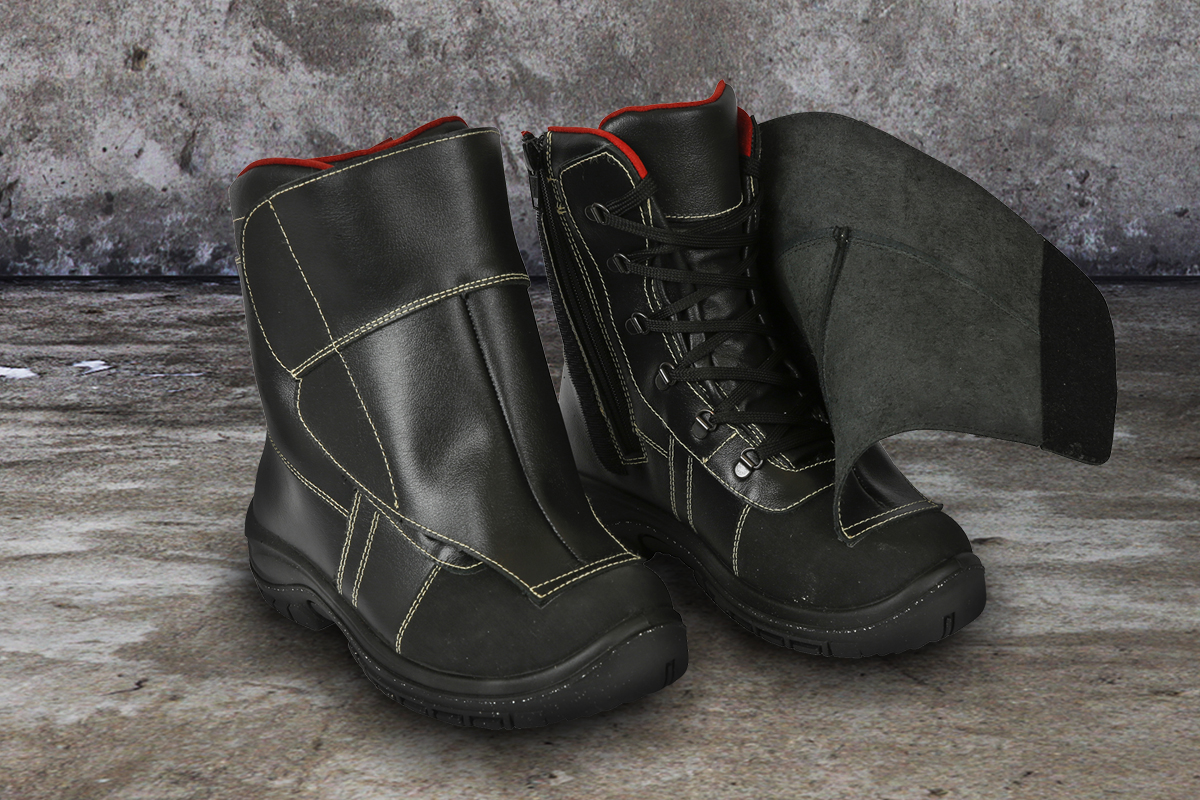

Litium range footwear
The Litium range of footwear can withstand both melted metal and 18,000 volts – but weighs just 914 grams.

